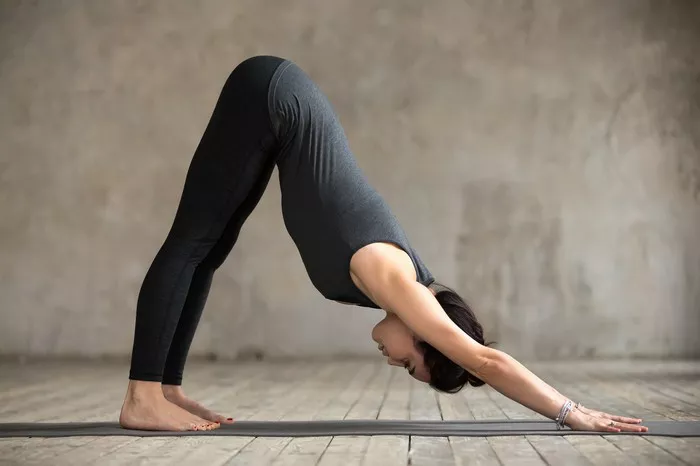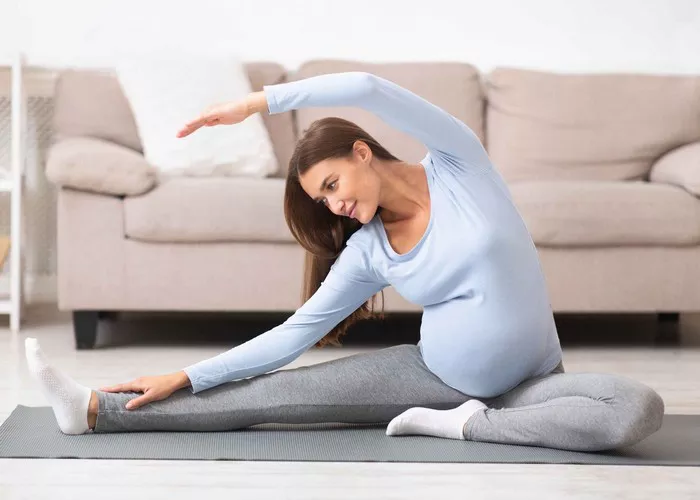Hypertension, commonly known as high blood pressure, is one of the most prevalent health issues in modern society. It often goes undiagnosed because it can develop without obvious symptoms, making it a silent but dangerous condition. Long-term hypertension increases the risk of heart disease, stroke, kidney damage, and other serious health problems. Conventional treatments such as medication are often prescribed to manage the condition, but lifestyle changes, including exercise, diet, and stress management, also play a crucial role. Among the most effective ways to address hypertension naturally is through yoga, a time-honored practice known to improve overall health, enhance flexibility, and reduce stress.
This article will explore which types of yoga are best suited for managing hypertension, the physiological mechanisms behind their effects, and how specific practices can help regulate blood pressure.
Understanding Hypertension
Hypertension occurs when the force of blood against the walls of your arteries is consistently too high. It is typically classified into two categories:
Primary (Essential) Hypertension: This type has no identifiable cause and usually develops over many years. It is most common in adults.
Secondary Hypertension: This type is caused by an underlying condition, such as kidney disease, thyroid problems, or the use of certain medications.
Blood pressure is measured in millimeters of mercury (mmHg) and is expressed as two numbers: systolic (the pressure when the heart beats) and diastolic (the pressure when the heart rests between beats). A normal blood pressure reading is around 120/80 mmHg. Hypertension is typically diagnosed when blood pressure readings are consistently higher than 130/80 mmHg.
In the context of yoga, the practice focuses on several aspects that directly influence blood pressure, including relaxation, breath control, and body postures (asanas). The calming effects of yoga can lower stress hormones, promote the relaxation of blood vessels, and improve overall heart function, all of which contribute to better blood pressure control.
The Benefits of Yoga for Hypertension
Yoga offers numerous benefits for people with hypertension:
Stress Reduction: Chronic stress is a major contributor to high blood pressure. Yoga incorporates various relaxation techniques that activate the parasympathetic nervous system, which helps to reduce stress and induce a state of calm.
Improved Circulation: Certain yoga poses enhance circulation by increasing blood flow to the heart and improving the elasticity of blood vessels. This can help reduce the resistance against which the heart has to pump blood, ultimately lowering blood pressure.
Mind-Body Connection: Yoga emphasizes mindfulness and breathing techniques, helping practitioners become more aware of their physical and emotional states. This heightened awareness can improve overall health and wellbeing, including lowering blood pressure.
Lowering the Heart Rate: Regular yoga practice has been shown to reduce the resting heart rate, which is an important indicator of cardiovascular health. A lower heart rate reduces the workload on the heart, contributing to long-term improvements in blood pressure.
Improved Flexibility and Posture: Many yoga poses improve flexibility, which helps reduce muscular tension. Proper posture also supports optimal blood flow, which can contribute to maintaining healthy blood pressure levels.
Which Yoga is Best for Hypertension?
While all forms of yoga offer benefits, some types are particularly well-suited to managing hypertension due to their emphasis on relaxation, breath control, and gentle movement. Here are the most effective styles of yoga for people with high blood pressure:
1. Hatha Yoga
Hatha yoga is one of the most accessible forms of yoga, particularly for beginners or those looking for a more gentle practice. It involves slow-paced movements and basic asanas (poses) that promote flexibility and relaxation. Hatha yoga emphasizes deep breathing, which is critical for stress reduction. By focusing on the breath and holding poses in a relaxed manner, hatha yoga helps to calm the mind and promote blood flow, making it an excellent choice for people with hypertension.
The slow-paced nature of Hatha yoga ensures that the practice does not strain the body, and it promotes balance in both the mind and body. Some of the most beneficial Hatha poses for hypertension include:
Sukhasana (Easy Pose): A simple seated pose that encourages deep breathing and relaxation.
Balasana (Child’s Pose): A resting pose that promotes relaxation and helps release tension from the back and neck.
Viparita Karani (Legs-Up-The-Wall Pose): A restorative pose that calms the nervous system and aids in reducing stress.
2. Restorative Yoga
Restorative yoga is a form of yoga that focuses entirely on relaxation and recovery. It involves the use of props such as blankets, bolsters, and pillows to support the body in passive poses that are held for extended periods (usually 5 to 10 minutes). This practice is designed to help the body reach a state of deep relaxation, which can have a profound effect on lowering blood pressure.
Restorative yoga is especially effective for people with high blood pressure, as it helps activate the parasympathetic nervous system, which is responsible for the “rest and digest” response. By gently stretching the body and encouraging deep, mindful breathing, restorative yoga helps to lower stress levels and encourage the body’s natural relaxation response.
Some popular restorative poses include:
Supta Baddha Konasana (Reclining Bound Angle Pose): A supported pose that opens the hips and promotes relaxation.
Supported Savasana (Corpse Pose): A deeply relaxing posture often used at the end of a restorative yoga practice to promote stillness and awareness.
3. Vinyasa Yoga
Vinyasa yoga involves a flowing sequence of poses linked with the breath, typically at a moderate to fast pace. While some may assume that a more vigorous form of yoga would increase blood pressure, studies have shown that regular Vinyasa practice can actually help lower both systolic and diastolic blood pressure over time. The key is in the controlled breathing and continuous movement, which can improve cardiovascular health by increasing blood flow and reducing stress.
For individuals with hypertension, it’s important to practice Vinyasa yoga mindfully and avoid pushing too hard in terms of speed or intensity. A beginner-friendly, slower-paced Vinyasa class may be ideal, especially for those new to yoga. As the body becomes more accustomed to the practice, the pace can gradually increase.
Certain Vinyasa poses that can benefit people with hypertension include:
Downward-Facing Dog (Adho Mukha Svanasana): A pose that lengthens the spine and helps improve circulation.
Warrior I (Virabhadrasana I): A standing pose that strengthens the legs and opens the chest, promoting better blood flow.
Tree Pose (Vrksasana): A balancing pose that helps with concentration and relaxation.
4. Kundalini Yoga
Kundalini yoga is a more spiritual form of yoga that involves specific techniques aimed at awakening the “kundalini energy” at the base of the spine. This style of yoga integrates movement, breathwork (pranayama), chanting (mantra), and meditation to achieve mental and physical balance. While Kundalini may be more dynamic than other styles, the emphasis on breath control and meditation can be highly beneficial for managing hypertension.
The breathing techniques in Kundalini yoga, particularly Kapalbhati (breath of fire) and Anulom Vilom (alternate nostril breathing), can help to regulate the autonomic nervous system, reducing stress and promoting relaxation. These practices are often used in conjunction with postures designed to release tension and stimulate the body’s energy flow.
5. Pranayama (Breath Control)
Pranayama, or the practice of controlled breathing, is an essential aspect of many forms of yoga. Deep breathing exercises have been shown to lower blood pressure by calming the nervous system, improving oxygen circulation, and reducing the impact of stress. Pranayama can be practiced independently of asana practice and is particularly beneficial for individuals with hypertension.
Several specific pranayama techniques that are beneficial for hypertension include:
Anulom Vilom (Alternate Nostril Breathing): This technique calms the mind and balances the nervous system.
Ujjayi Pranayama (Victorious Breath): This deep, steady breath enhances oxygen intake and calms the body.
Bhramari (Bee Breath): Known for its calming effects, this practice helps to reduce anxiety and stress.
Key Considerations for Practicing Yoga with Hypertension
While yoga can be a powerful tool for managing hypertension, it is important to approach the practice with mindfulness. Here are some tips for safely practicing yoga with high blood pressure:
Consult Your Doctor: Before starting any new exercise routine, consult your healthcare provider to ensure yoga is safe for your specific condition.
Avoid Inversions: Poses like headstands and shoulder stands may increase pressure in the head and neck and should be avoided by individuals with high blood pressure.
Focus on Relaxation: Emphasize slow, controlled movements and deep, relaxing breaths. The goal is to reduce stress, not add additional strain.
Listen to Your Body: Always practice within your limits and stop if you feel dizzy, lightheaded, or uncomfortable.
Practice Regularly: Consistency is key. Aim for a regular practice, ideally 3 to 4 times a week, for maximum benefits.
Conclusion
Yoga is an excellent complementary therapy for managing hypertension. It offers a holistic approach that incorporates physical movement, breath control, and mindfulness, all of which work together to reduce stress and improve cardiovascular health. Practices such as Hatha yoga, Restorative yoga, Vinyasa yoga, Kundalini yoga, and Pranayama can help lower blood pressure and promote overall well-being. However, it is important to tailor your practice to your individual needs, taking into account your fitness level and any other health concerns.
By committing to regular yoga practice, you can take control of your health, reduce your blood pressure, and enhance your quality of life.






















